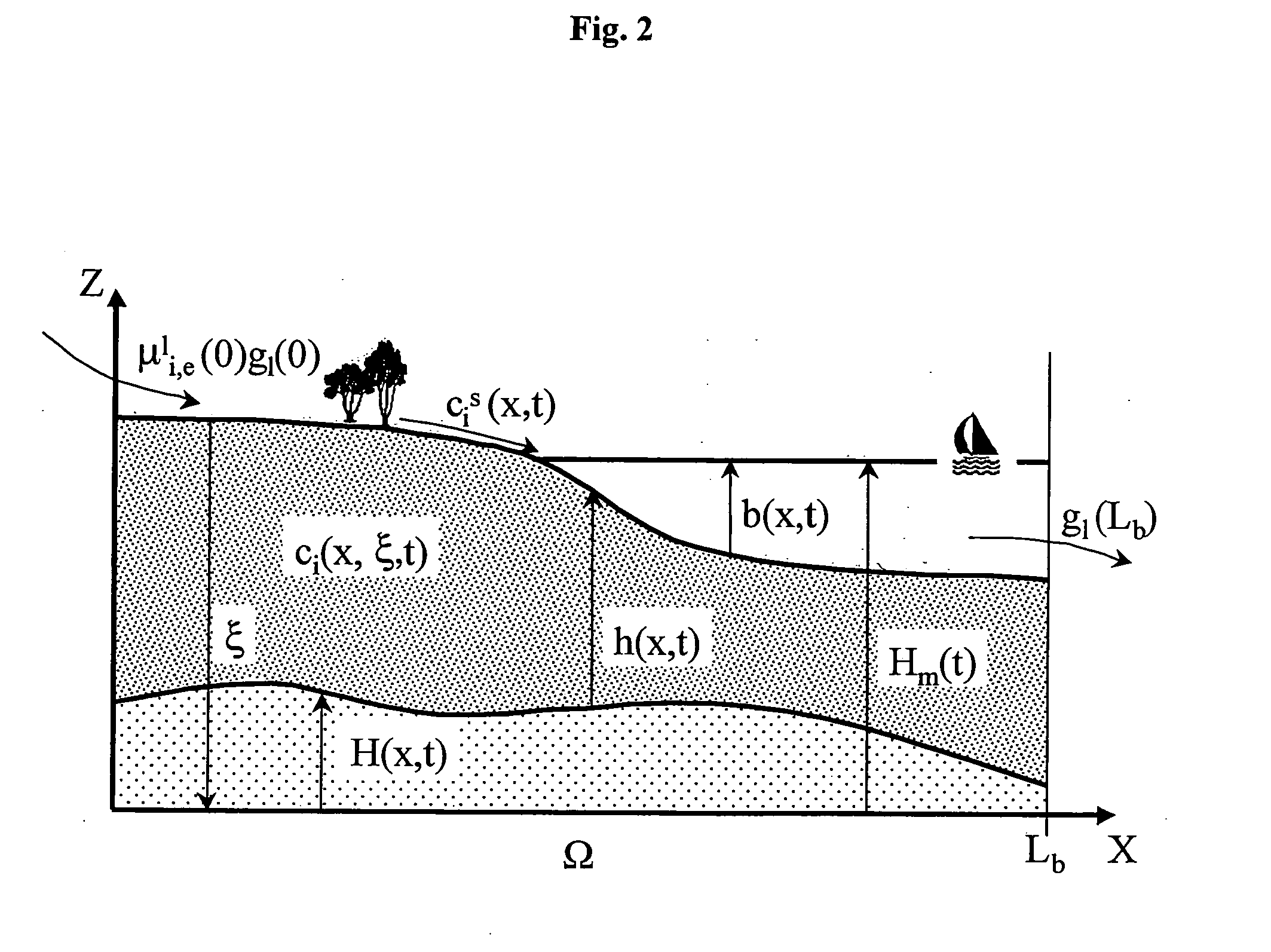Method of simulating the sedimentary deposition in a basin respecting the thicknesses of the sedimentary sequences
a sedimentary sequence and simulating method technology, applied in the direction of instruments, analogue processes for specific applications, electric/magnetic computing, etc., can solve the problems of never succeeding, hypothesis may appear too restrictive, and cannot ensure a satisfactory agreement between the reality observed and the result of the model
- Summary
- Abstract
- Description
- Claims
- Application Information
AI Technical Summary
Problems solved by technology
Method used
Image
Examples
application example
[0132] Application Example
[0133] We first want to construct a synthetic example on a single layer of a 3D basin, allowing to appreciate the results of the invention. Domain Ω is a rectangle (0,Lx)×(0,Ly) with Lx=100 km and Ly=50 km. The incoming flows at the boundaries are −1.5 m2 / year on side x=0, −0.75 m2 / year on side y=50 km, and the outgoing flows are zero on the other two sides. The sediments consist of two lithologies (L=2) of diffusion coefficients kl,c=500 m2 / year, k2,c=50 m2 / year, kl,m=50 m2 / year and k2,m=5 m2 / year. The incoming fractional flows at x=0 and y=50 km are 0.5. The initial composition of the basin is 0.5. The sequence duration is 10 Ma. The calculation grid is uniform Cartesian of size 40×20 cells, and the time interval is uniform, equal to 1 Ma. The synthetic example is constructed considering an initial bathymetry defined, in km, by b0(x)=A0(x)=100(1−cos π(x−y)). The thickness of the first layer (l=0) to be calibrated is obtained by a calculation of the instat...
PUM
 Login to View More
Login to View More Abstract
Description
Claims
Application Information
 Login to View More
Login to View More - R&D
- Intellectual Property
- Life Sciences
- Materials
- Tech Scout
- Unparalleled Data Quality
- Higher Quality Content
- 60% Fewer Hallucinations
Browse by: Latest US Patents, China's latest patents, Technical Efficacy Thesaurus, Application Domain, Technology Topic, Popular Technical Reports.
© 2025 PatSnap. All rights reserved.Legal|Privacy policy|Modern Slavery Act Transparency Statement|Sitemap|About US| Contact US: help@patsnap.com



